HSC Ancient Core Study: Pompeii and Herculaneum Sources and Quotations
1/32
There's no tags or description
Looks like no tags are added yet.
Name | Mastery | Learn | Test | Matching | Spaced |
|---|
No study sessions yet.
33 Terms
Geographical Setting and Natural Resources
“[Campania is] one of the loveliest places on earth”
Source: Pliny the Elder (Ancient Historian)
Geographical Setting and Natural Resources
Quote: “[Campania has] an abundance of corn, vines and olives, splendid fleeces produced by its sheep”
Source: Pliny the Elder (Ancient Historian)
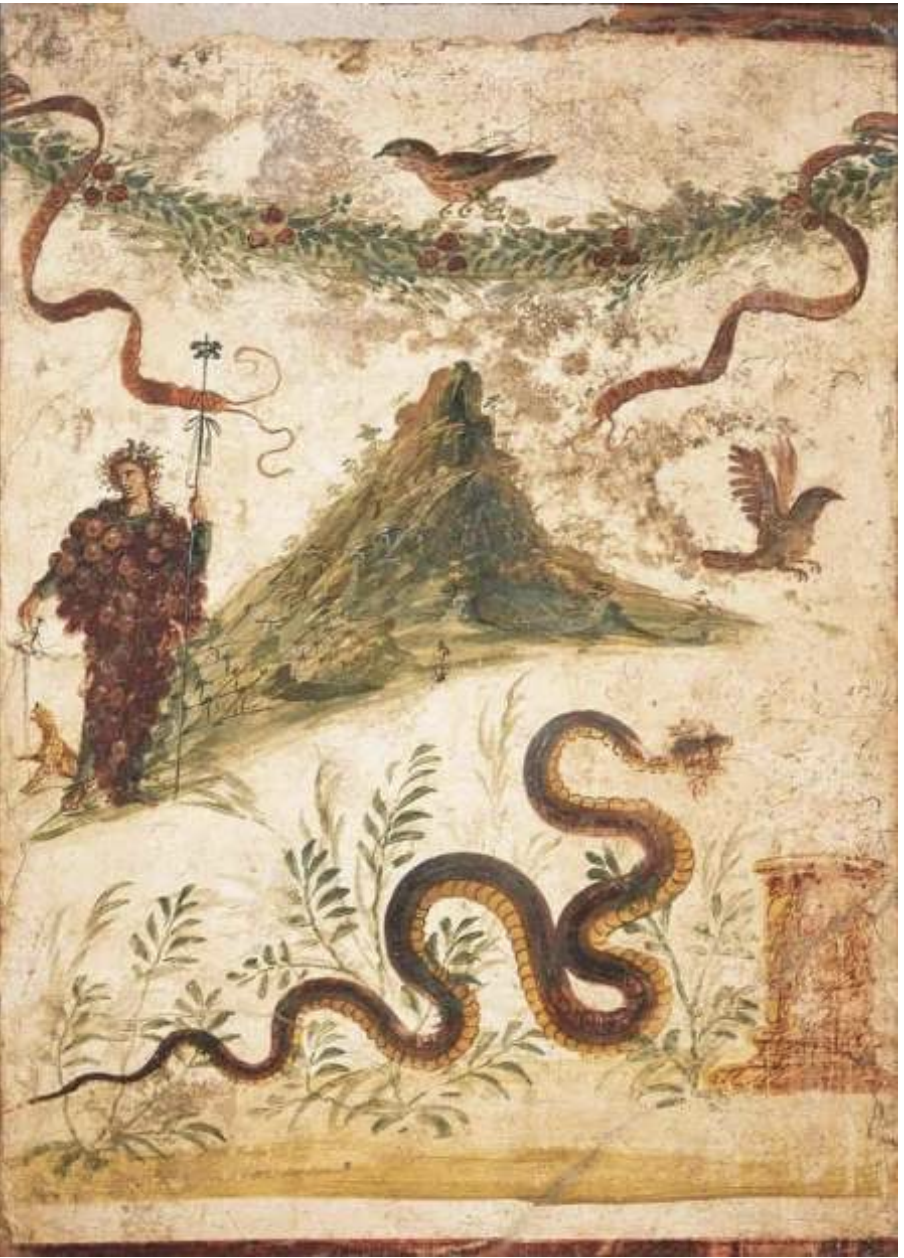
Source: Fresco depicting Bacchus on the slopes of Mount Vesuvius Location: Pompeii
The eruption
“A cloud of extraordinary size appeared”
Source: Pliny the Younger (Ancient Historian)
The eruption
“Rain of pumice stones”
Source: Pliny the Younger (Ancient Historian)
The eruption
“Earth shocks became so violent”“Soon the cloud began to descend upon the earth and cover the sea”
Source: Pliny the Younger (Ancient Historian)
The eruption
“The walls of the house were swaying with violent shocks.”
Source: Pliny the Younger (Ancient Historian)
Public and Private Buildings
“The clever orientation of porticoes, dining rooms and bedrooms… shows that Roman aristocrats consciously included nature in their designs… This takes the Hellenistic approach to an extreme”
Paul Zanker (Contemporary Historian)
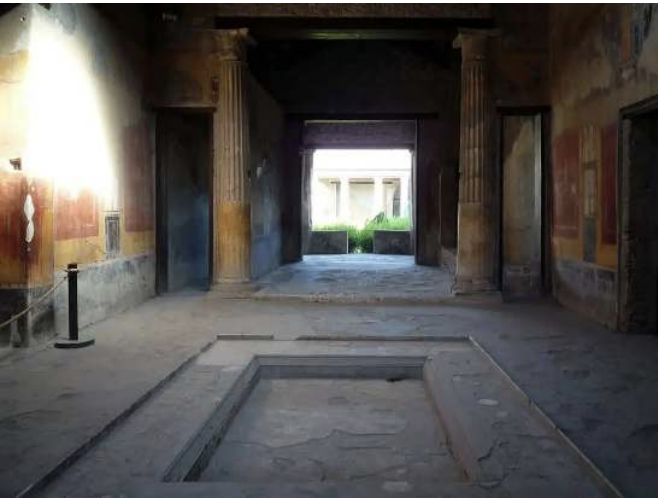
Public and Private Buildings
Impluvium in the atrium of a house House of Menander, Pompeii
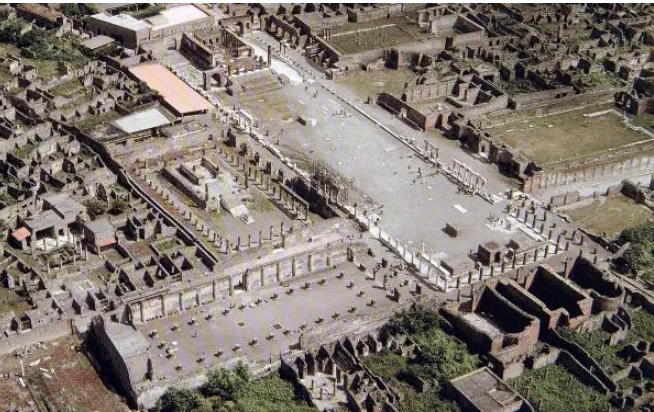
Public and Private Buildings
Source: The Forum Location: Pompeii
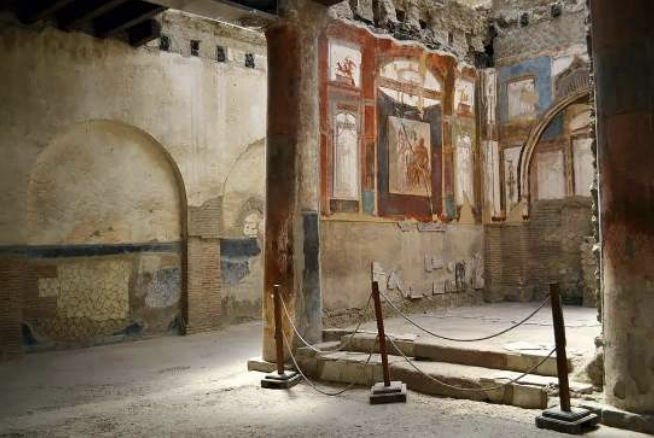
Public and Private Buildings
Source: Collegium of Augustales Location: Herculaneum
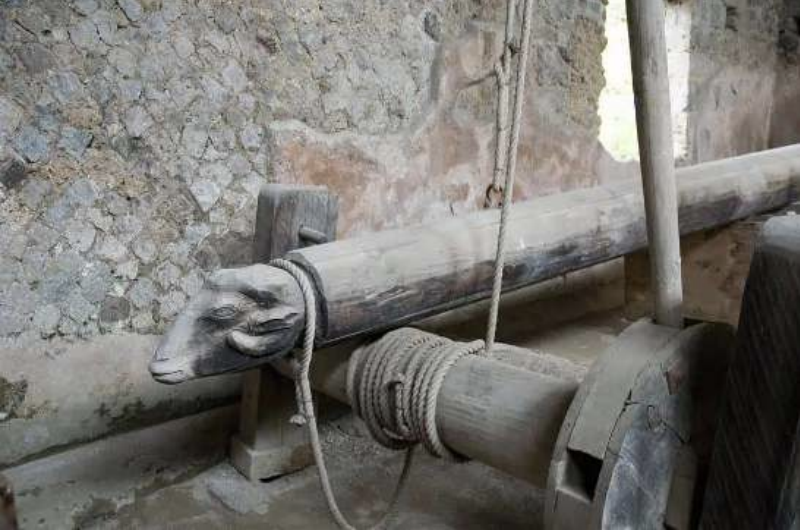
The Economy
Source: Wine press Location: Villa of Mysteries, Pompeii
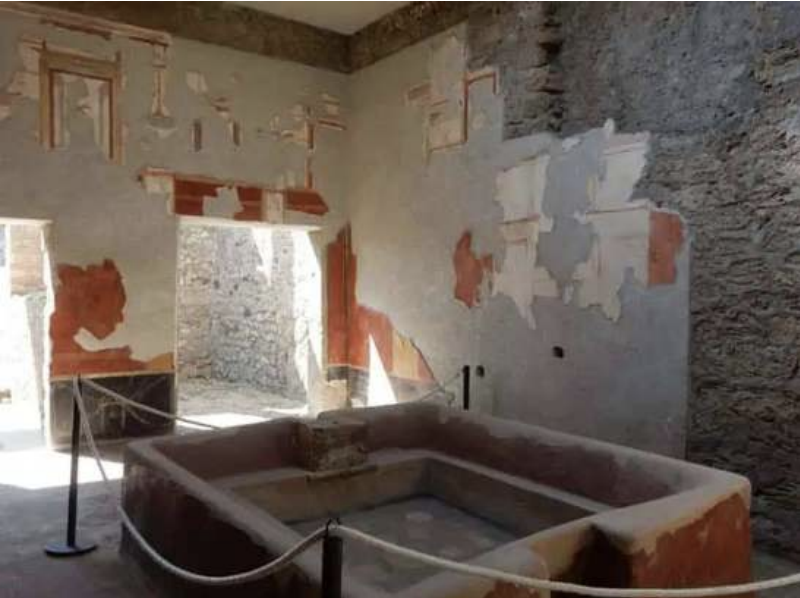
The Economy
Source: Fuller’s basin in the impluvium of a house Location: House of the Fullery, Pompeii
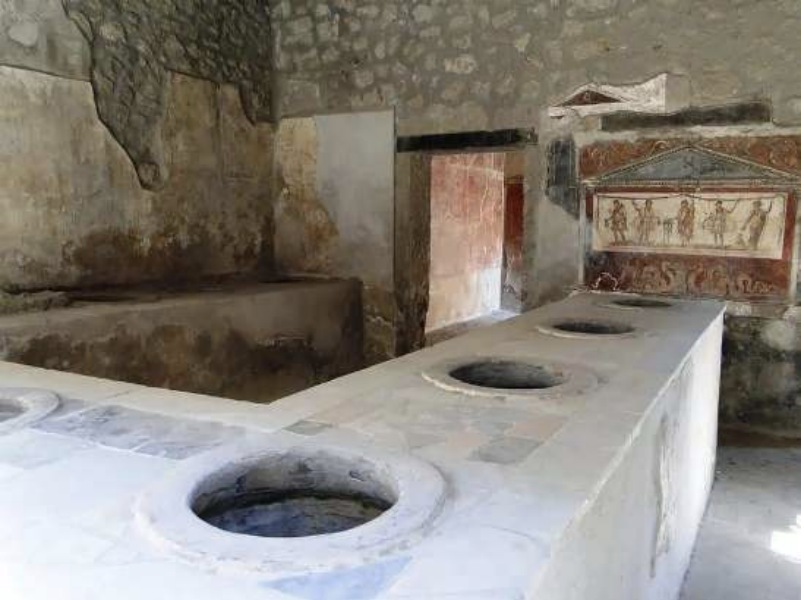
The Economy
Source: Thermopolium Location: Thermopolium of Vetutius Placidus
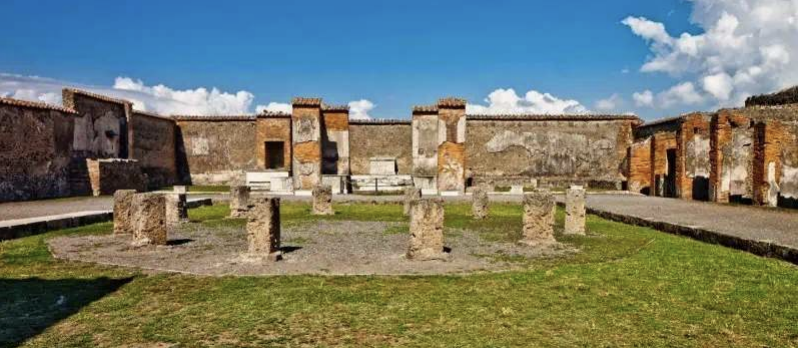
The Economy
Source: Remains of fish and bones, fruit and cereal, and centre area which housed a fish tank, fountain and workbench. Location: The Macellum, Pompeii
Source: Herbs and spices found in sewerage waste, including black peppercorns, suggests far reaching famine.
Location: Herculaneum
Quote: “Come to the sign of the bowls [for] half a dozen types of wine”
Source: Herculaneum tavern sign
Slaves
Quote:“Poppaea Note, a freed woman of Priscus… had slaves of her own”
Source: Pamela Bradley (Contemporary Historian)
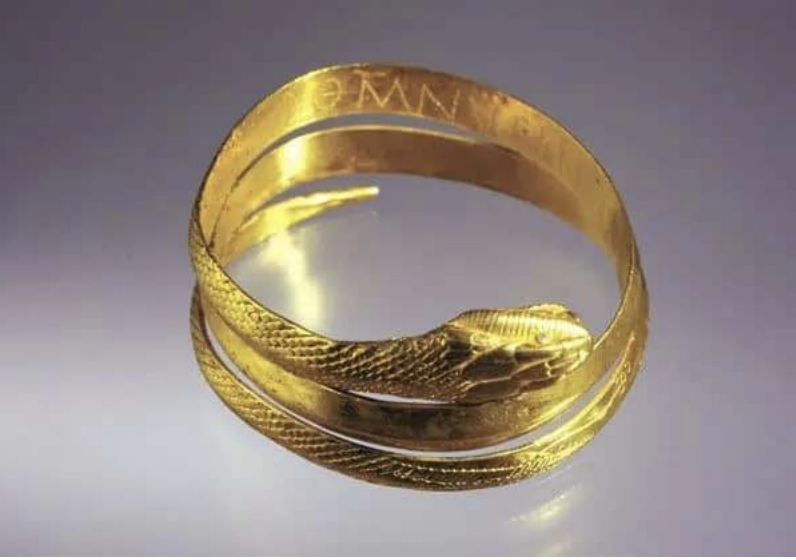
Slaves
Source: Bracelet engraved with “From a master to his slave girl” Location: Pompeii
Women
Quote: “Women could own property, do business, pay for construction, hold honorific and cultic office, and go about in public”
Source: Elaine Fantham (Contemporary Historian)
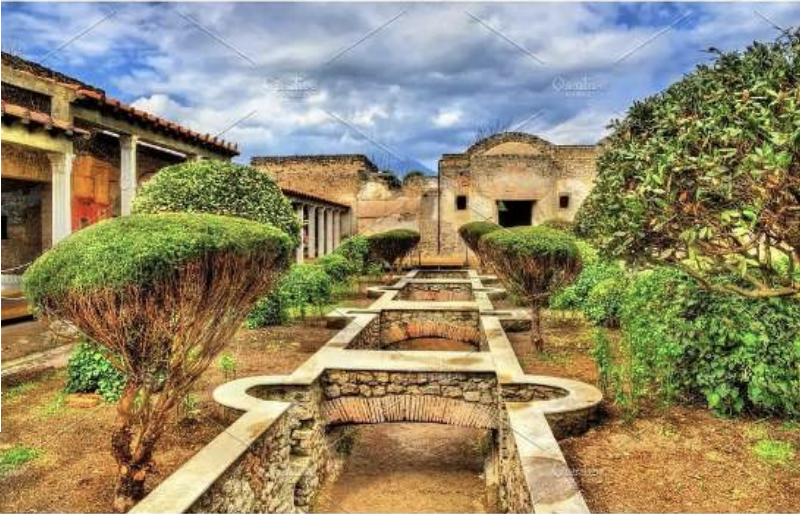
women
Source: House of Julia Felix Location: Pompeii
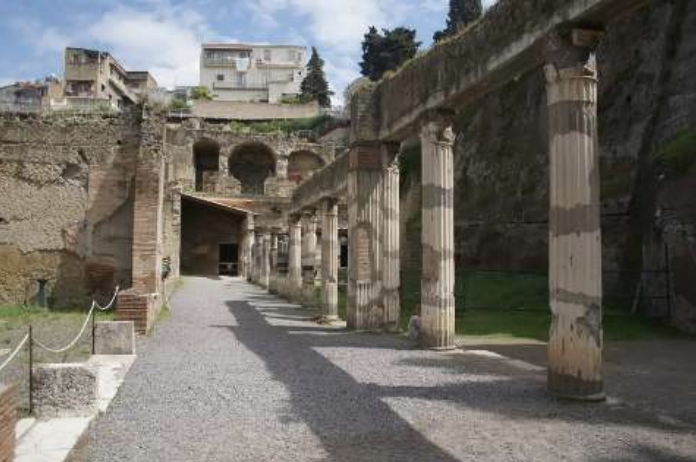
Leisure Activities
Source: Palaestra. Excavations uncovered a pile of 2.2kg round stones used for throwing contest. Location: Herculaneum
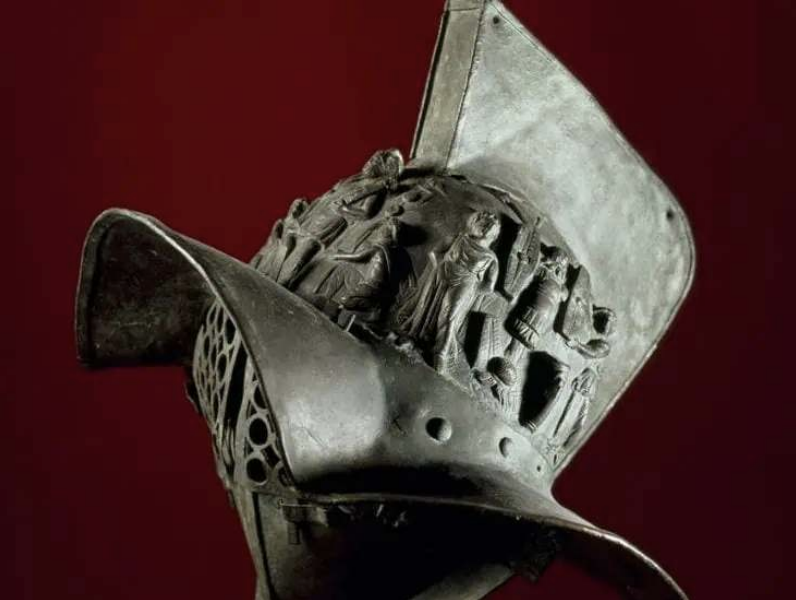
Leisure Activities
Source: Bronze gladiator’s helmet Location: Pompeii
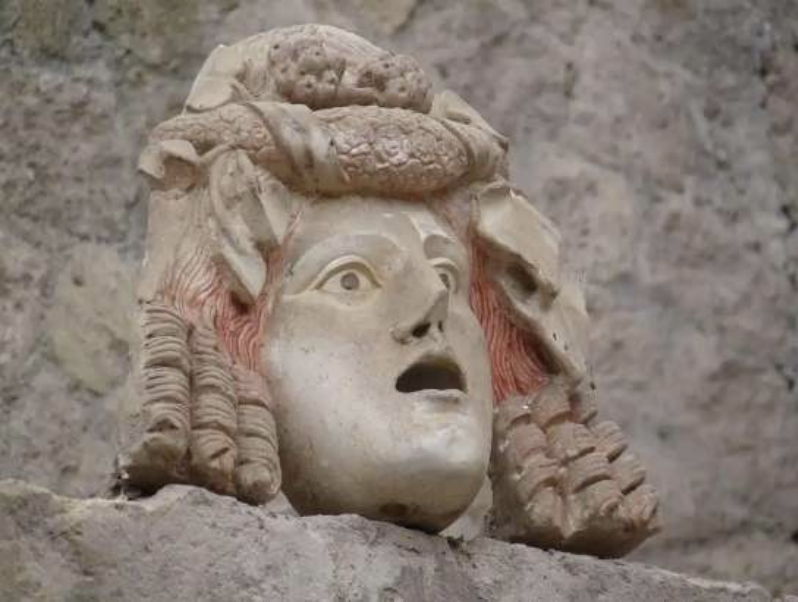
Leisure Activities
Source: Terracotta theatrical mask Location:House of Neptune Mosaic, Herculaneum
Baths
Quote: “A visit to the baths was a regular social event”
Source: Brian Brennan (Contemporary Historian)
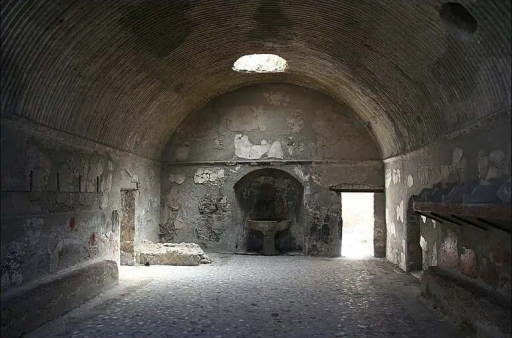
Baths
Source: Men’s changing room at the Forum baths Location: Herculaneum
Water
Quote: “Herculaneum carried rainwater and waste out to sea via an excellent drainage system”
Source: Brian Brennan (Contemporary Historian)
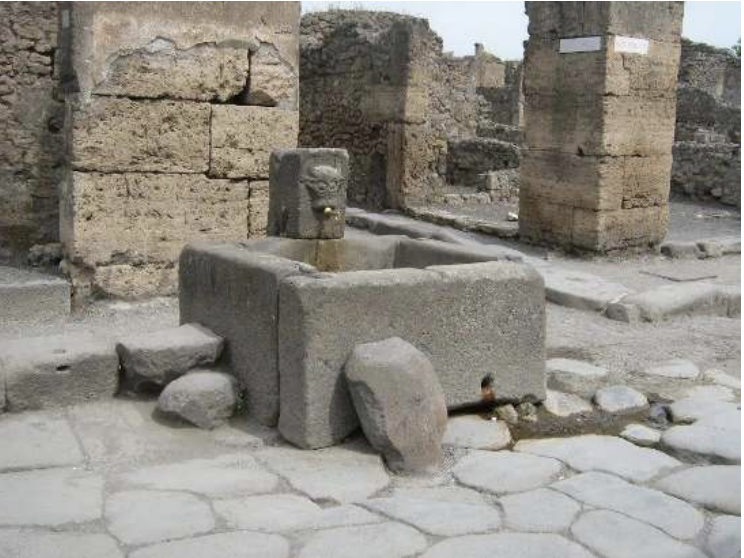
Water Supply
Source: Public water fountain Location: 1 of 42 excavated at Pompeii
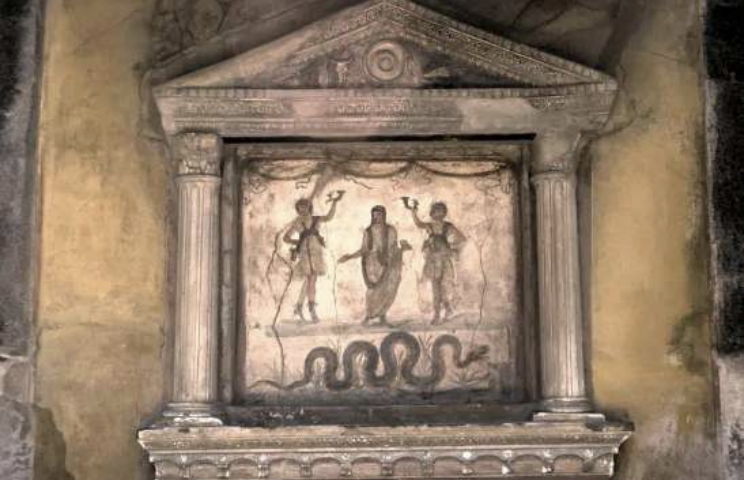
Religion
Source: Lararium Location: House of Vettii, Pompeii
Religion
Quote: “The large number of such shrines indicated widespread religious practices among the inhabitants of Pompeii as a whole”
Source: Alison Cooley (Contemporary Historian)
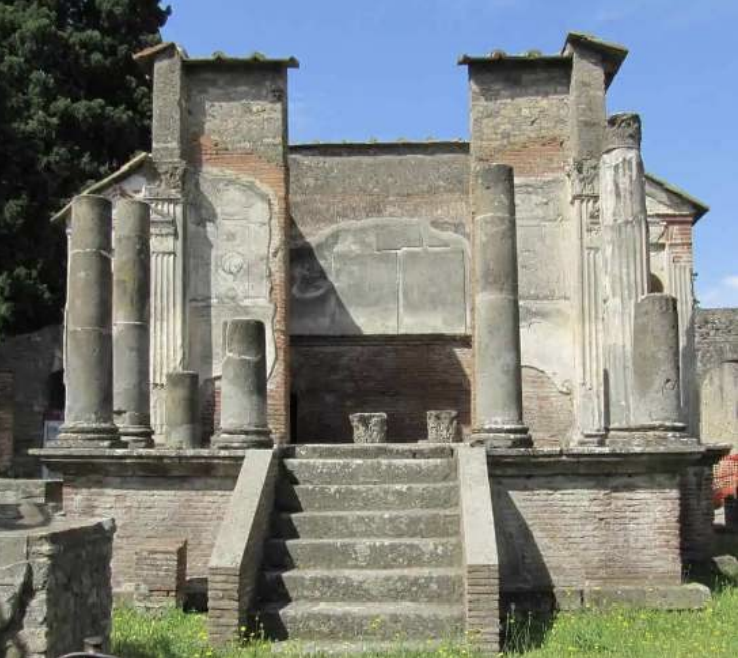
Religion
Source: Temple of Isis Location: Pompeii
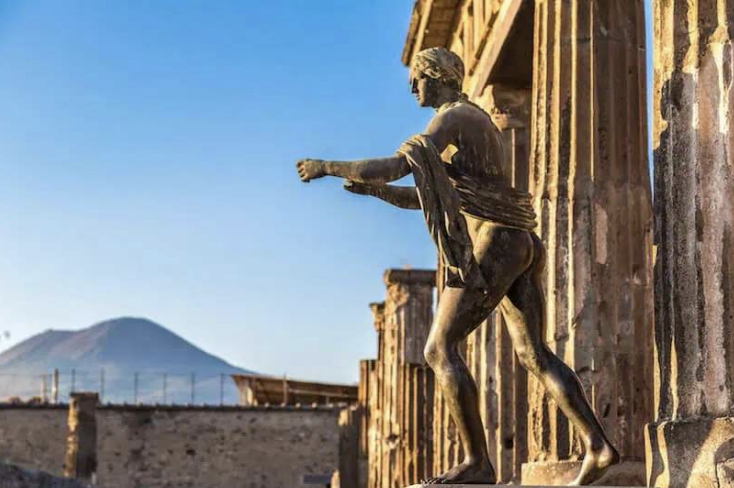
Religion
Source: Bronze statue of Apollo Location: Temple of Apollo, Pompeii
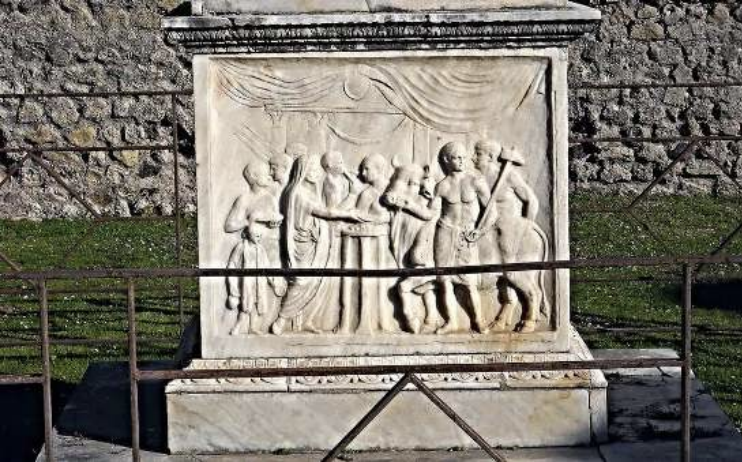
Religion
Source: Marble sacrificial altar Location: Temple of Vespasian, Pompeii